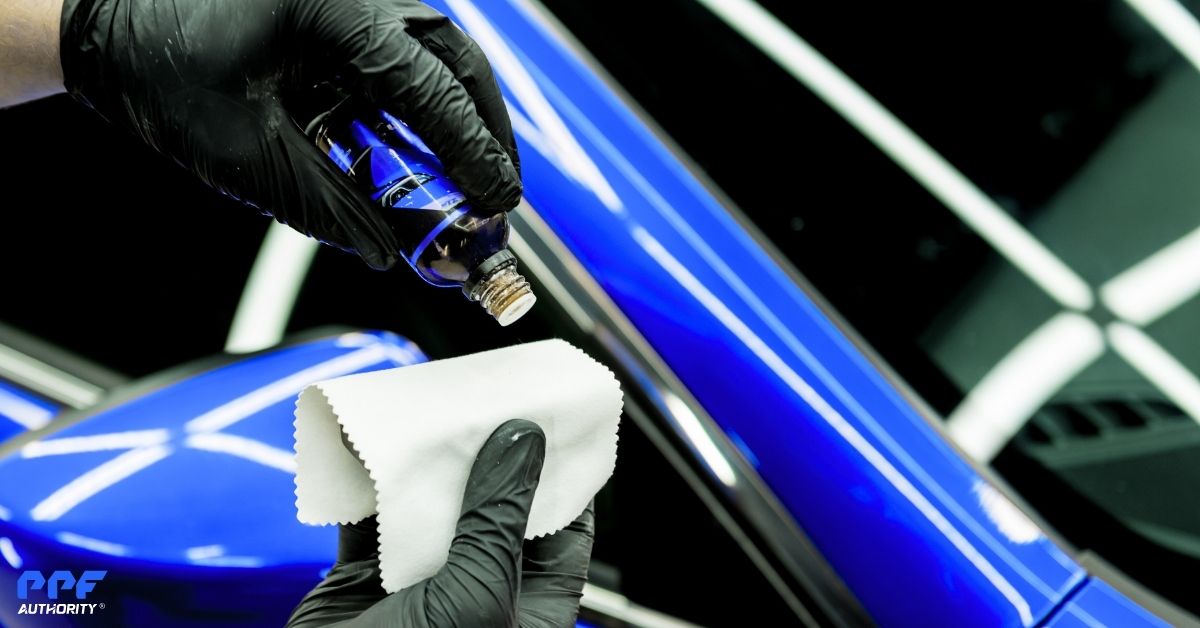The Basics of PPF Installation
Paint Protection Film (PPF) is a clear urethane film that adheres to your car’s surface, shielding it from rock chips, scratches, and environmental damage. To perform as intended, PPF must be applied perfectly—free of bubbles, wrinkles, or misalignment.
DIY Installation
DIY PPF kits come with pre-cut pieces designed for specific car models or universal rolls that require manual cutting and fitting. These kits appeal to car enthusiasts who enjoy hands-on projects and want to save on installation costs.
Professional Installation
Professional PPF installers are trained to apply the film using advanced techniques and tools. They often work in controlled environments, ensuring a pristine result that enhances the longevity and appearance of the film.
The Challenges of DIY PPF Installation
1. Precision and Expertise Are Required
Installing PPF involves careful alignment, stretching, and smoothing to ensure a perfect fit. Even small mistakes can result in:
- Air Bubbles: Trapped air creates unsightly bubbles that are difficult to remove.
- Wrinkles and Stretch Marks: Poor handling can lead to creases that ruin the film’s appearance.
- Misalignment: Improper placement may leave gaps or overlaps, exposing paint to damage.
2. Tools and Environment Matter
DIY installations often fail due to a lack of proper tools and controlled conditions. PPF requires:
- Specialized squeegees and knives for precise application.
- A dust-free, temperature-controlled workspace to prevent contamination.
- Slip solutions (soap-and-water mixtures) to position the film correctly.
3. Time-Consuming Process
Applying PPF is not a quick task, especially for beginners. A DIY installation can take 10-15 hours or more for a full car. Mistakes often require starting over, further increasing the time and effort involved.
4. Risk of Damage to Your Car
Without experience, you risk:
- Scratching or cutting your car’s paint while trimming the film.
- Applying too much force, which can damage sensitive areas like edges and seams.
- Wasting expensive film if mistakes occur during the application.
The Benefits of Professional Installation
1. Flawless Application
Professional installers have the training and experience to achieve a seamless finish:
- Custom Fit: Professionals use pre-cut templates or precision-cut film for exact fits, ensuring full coverage with no gaps.
- Bubble-Free: Trained technicians know how to remove air bubbles and ensure the film lays perfectly flat.
- Perfect Edges: Professionals tuck the film’s edges neatly, creating a clean, nearly invisible look.
2. Advanced Tools and Techniques
Professional shops are equipped with specialized tools and facilities:
- Plotting Machines: These create custom-cut PPF designs tailored to your car’s exact specifications.
- Controlled Environments: Dust-free, well-lit workshops prevent contamination during the application process.
- Stretching Expertise: Professionals know how to stretch the film correctly to cover complex curves and angles without overstretching or tearing.
3. Long-Term Durability
Proper installation directly impacts how long the PPF lasts and how well it protects your car:
- Adhesion: Professionals ensure the film bonds securely to your car’s paint, preventing peeling or lifting over time.
- Optimal Performance: Professionally installed PPF maintains its self-healing, hydrophobic, and protective properties better than poorly applied film
4. Warranty and Support
Most professional PPF installations come with warranties that DIY kits lack. These warranties:
- Cover defects in the film or installation process.
- Provide peace of mind that your investment is protected
5. Saves Time and Stress
What could take a DIY installer hours or days is often completed by a professional in 4-6 hours for partial coverage or a single day for full-car PPF. This saves you significant time and frustration.
Cost Comparison: DIY vs. Professional Installation
| Aspect | DIY Installation | Professional Installation |
| Upfront Cost | $200–$1,000 (depending on kit). | $1,500–$7,000 (depending on coverage). |
| Tools and Supplies | Additional $50–$200 for tools. | Included in the installation cost. |
| Time Investment | 10–15+ hours. | 4–8 hours (professionals). |
| Mistakes and Waste | Risk of wasted film and extra costs for replacements. | Rare; covered by warranty. |
| Long-Term Results | May peel, bubble, or wear unevenly. | Flawless, durable application. |
While professional installation costs more upfront, it provides superior results that save you money and effort in the long run.
Who Should Consider DIY Installation?
DIY PPF installation may be a viable option if you:
- Have prior experience applying film or vinyl wraps.
- Are working on an older or less valuable car, where mistakes are less critical.
- Are covering a small or simple area (e.g., door handles or side mirrors).
Why Professional Installation Is the Better Choice
For New or High-Value Cars
If you’ve invested in a luxury, sports, or brand-new car, professional installation ensures the PPF enhances and protects your vehicle.
For Full-Car or Complex Installations
Full-body PPF or areas with intricate curves (e.g., bumpers and headlights) require expert-level precision that DIY kits cannot guarantee.
For Long-Term Peace of Mind
The cost of correcting a poor DIY installation—replacing wasted film or fixing paint damage—can exceed the cost of hiring a professional.
Conclusion
While DIY PPF kits may appeal to budget-conscious car owners, the complexity of the installation process often leads to frustration, wasted film, and subpar results.
On the other hand, professional PPF installation ensures a flawless application that protects your car, maintains its appearance, and lasts for years.
For high-value vehicles, full-body coverage, or anyone seeking premium results, trusting a certified installer is the best choice. The upfront investment in professional installation pays off with long-term durability, enhanced aesthetics, and peace of mind.
When it comes to safeguarding your vehicle, don’t settle for less—choose professional PPF installation and enjoy the ultimate protection for your car.

